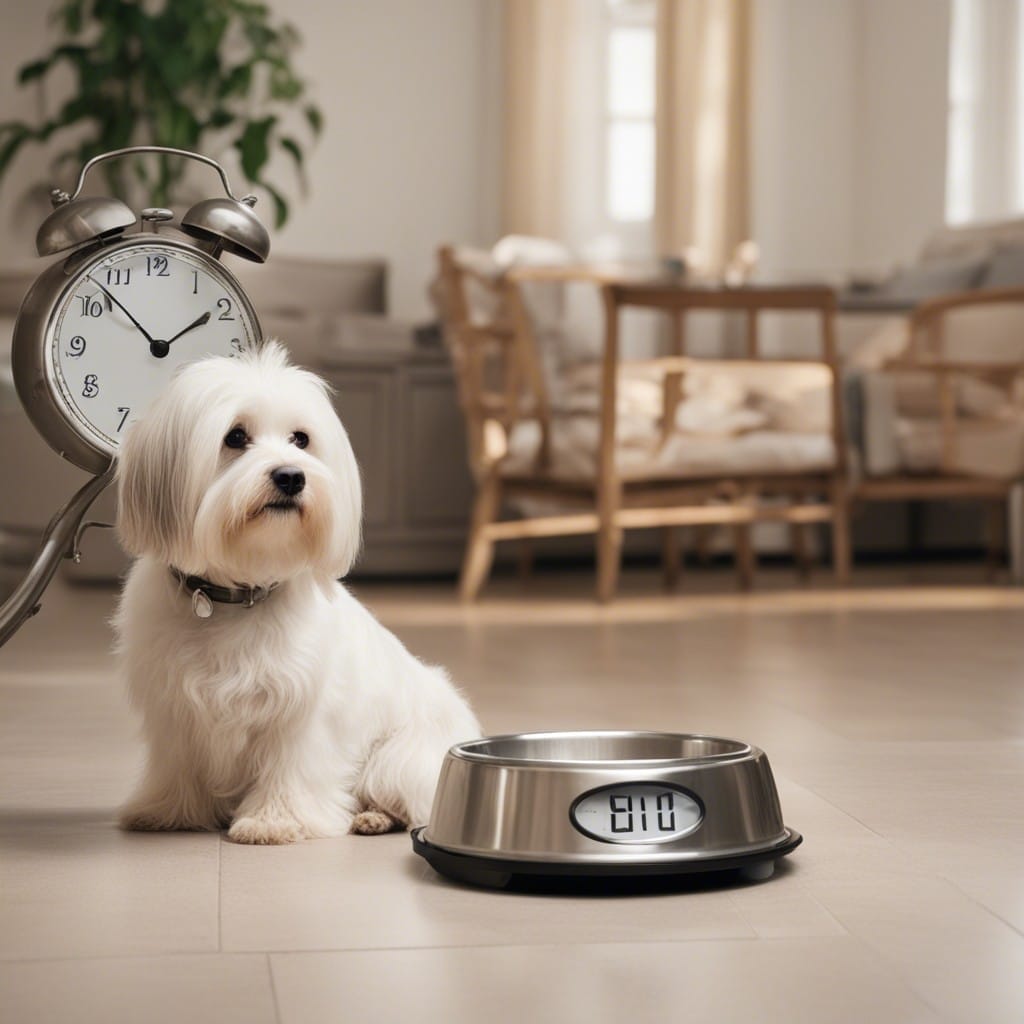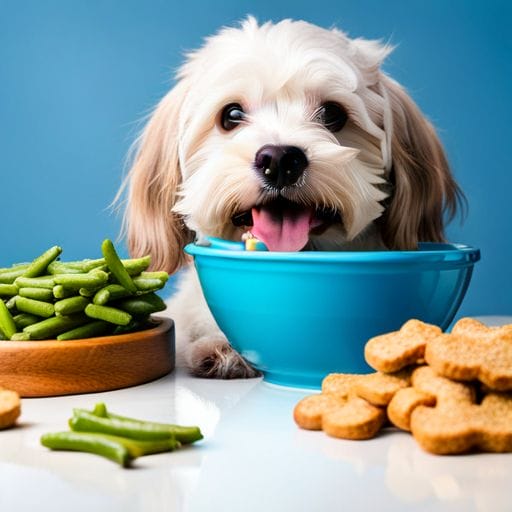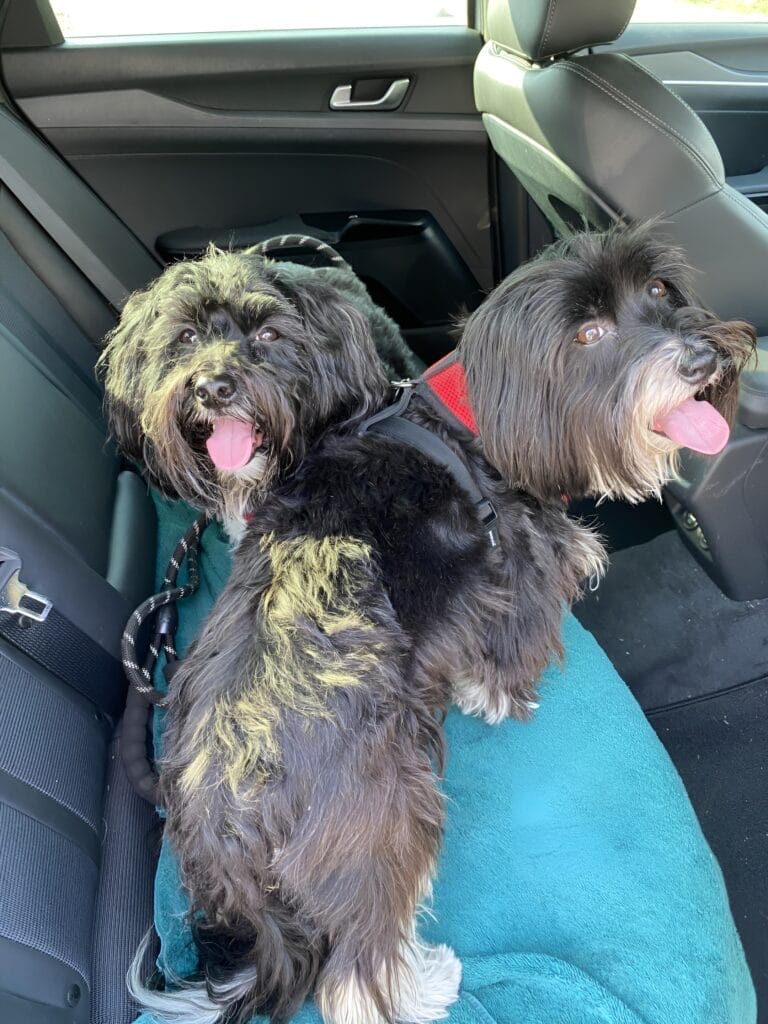
Introduction
Are you wondering if it’s safe to walk your pup right after they’ve eaten? The debate of whether to take your dog for a walk after a meal has raged on among pet owners for years.
As evidenced by a review of the most popular dog forums, many pet owners have questions about the timing of when to walk you dog. Common questions include: Questions such as “Should I feed my dog before or after a walk?”, “How long should I wait to walk my dog after eating?”, “Can I walk my dog 30 minutes after eating?”
In this article, we’ll explore the risks and benefits of post-meal walks, as well as the recommended waiting times before exercising your furry friend. By understanding the potential consequences and advantages, you can make an informed decision that prioritizes your dog’s well-being.
So, let’s delve into this topic and ensure the safety, happiness, and health of your beloved companion.
The Impact of Walking a Dog After Eating

You should be cautious about walking your dog immediately after eating as it may have an impact on their digestive system.
The question of whether to feed your dog before or after a walk depends on individual preferences and guidelines.
Walking a dog right after eating can lead to bloating and stomach twists, which can be dangerous for their health. It’s important to consider the risks and benefits when deciding on the timing of feeding and walking your dog.
Experts recommend waiting at least two hours before engaging in strenuous exercise after a meal. This allows for proper digestion and prevents complications such as vomiting, abdominal pain, and discomfort.
Additionally, walking your dog after eating can help with food propulsion in the digestive system and stabilize blood glucose levels.
It’s always best to consult with a veterinarian for personalized advice on the best routine for your dog’s specific needs and health conditions.
Risks and Dangers of Post-Meal Walks for Dogs

It’s important to be aware of the risks and dangers of taking your dog on a walk right after they’ve eaten, as it can lead to bloating and stomach twists. Strenuous exercise after a meal can cause Gastric Dilation Volvulus (GDV), a serious condition that requires immediate veterinary attention.
Walking a dog immediately after eating inhibits proper digestion and can result in vomiting, abdominal pain, discomfort, and cramps. To prevent these issues, it’s recommended to wait at least two hours before engaging in any vigorous activity with your dog after a meal.
Prioritizing the safety and health of your dog is crucial, and consulting with a veterinarian can provide personalized advice.
Benefits of Exercising Your Dog After Feeding

Exercising your dog after feeding can provide numerous benefits. One benefit is aiding in food propulsion and stabilizing blood glucose levels. When you take your dog for a walk after they’ve eaten, the muscles in their digestive system are stimulated, helping to propel the food through their system more efficiently.
Additionally, walking after feeding can help stabilize their blood glucose levels, which is especially important for dogs with diabetes. Regular exercise after meals can also contribute to weight and body conditioning, promoting overall health.
However, it’s important to wait a sufficient amount of time before taking your dog out for exercise after they’ve eaten. Veterinarians recommend waiting at least two hours after a meal before engaging in strenuous exercise.
Remember to always prioritize the safety and well-being of your furry friend, and consult with a veterinarian for personalized advice.
How Long Should You Wait Before Walking a Dog After Eating

It is generally recommended to wait at least 30 minutes to an hour after your dog eats before taking them for a walk.
This allows time for their food to settle and for their digestive system to begin working properly.
Walking immediately after eating can increase the risk of digestive issues and discomfort for your dog.
Prioritizing your dog’s health and well-being by following these guidelines will help ensure a safe and enjoyable walk for both you and your furry friend.
Feeding Before or After Walking: Which Is Best for Your Dog?

The order of feeding and walking your dog can depend on your dog’s individual needs and preferences. Some dogs may prefer to go for a walk first thing in the morning to burn off energy and stimulate their appetite. Others may prefer to eat first and then go for a walk once their food has settled.
It is important to listen to your dog’s cues and find a routine that works best for them. Experiment with different feeding and walking schedules to see what your dog prefers.
Feeding your dog before a walk can provide them with the energy they need for exercise throughout the day. It also helps establish a routine, as dogs often urinate or defecate after a meal. Additionally, walking before meals may prevent overeating or digestive issues, and allows the dog to burn calories before consuming food, aiding in weight management.
On the other hand, walking a dog after eating can lead to risks such as bloating and stomach twists. It’s recommended to wait at least two hours before playing or exercising after a meal.
Ultimately, there’s no right or wrong approach, and it depends on individual preferences and the dog’s needs. Consulting with a veterinarian can provide personalized advice for your furry friend. Prioritizing their safety, happiness, and health is key.
Conclusion
In conclusion, it’s generally recommended to wait at least 30 minutes to an hour after your dog has eaten before taking them for a walk. Walking immediately after a meal can increase the risk of health issues such as bloat or gastrointestinal discomfort.
However, there are benefits to exercising your dog after feeding, such as aiding digestion and burning off excess energy.
Ultimately, it’s important to consider your dog’s individual needs and consult with your veterinarian for personalized advice.
- About the Author
- Latest Posts

Sara is a passionate writer and an avid lover of Havanese dogs. With several years of experience in dog training, breeding, and care, she has developed a deep understanding and admiration for the Havanese breed. Sara’s mission is to provide valuable insights, resources, and tips to help Havanese dog owners provide the best possible care and nurturing for their beloved pets.








